#ESPACIO CULTURA
Explore tagged Tumblr posts
Text
Spain: “Espacio Cultura” Magazine Presents its Annual Special Issue
España: La Revista “Espacio Cultura” Presenta su Número Especial Anual A party in the studio of its director, Francisco Arroyo Ceballos, has been the culmination of a new year of promotion and dissemination of culture by said medium. Una fiesta en el estudio de su director, Francisco Arroyo Ceballos, ha sido el colofón a un nuevo año de promoción y difusión de la cultura por parte de dicho…
#80 PAGINAS DE CULTURA PURA Y DURA#ABANICO DE PRODUCCIÓN#AMERICA#CORDOBA#CULTURAL#ESPAÑA#ESPACIO CULTURA#EUROPA#FRANCISCO ARROYO CEBALLOS#GRUPO PUNTO DE REFERENCIA#JOSE MANUEL ROSARIO#lomasleido#lomasvisto#LUIS ASTOLFI#Magazine#MAGAZINE PRESENTS ITS ANNUAL SPECIAL ISSUE#MARIA PIÑA#MARIJOSE MUÑOZ RUBIO#MUNDO#Nota#PACO VELÁZQUEZ#PEPE GONZALEZ ARENAS#REVISTA EN PAPEL Y DIGITAL#THE ARTICLES#VERONICA ESQUINAS
0 notes
Text
https://www.instagram.com/onlinehiphopvibes/

#🌟 X Shopping Online Hip Hop#espacio dedicado a la cultura urbana moda 🔥#estilo de vida 🎧tecnología 💻 y tendencias únicas 🎓 cursos online aquí📚
2 notes
·
View notes
Text
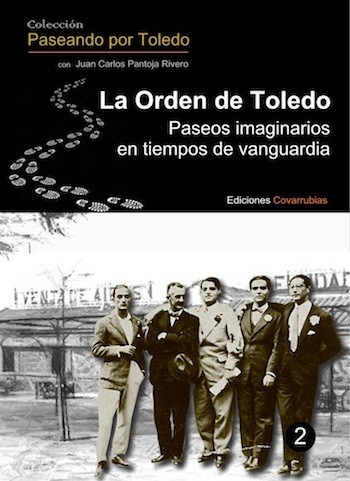
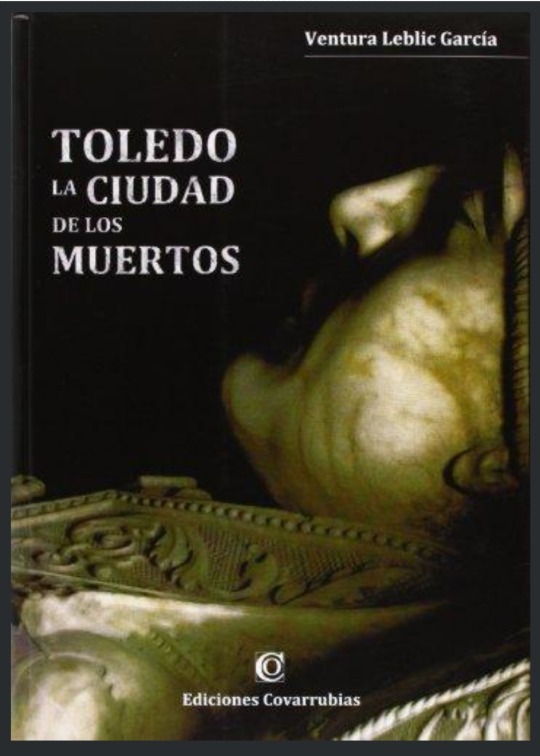
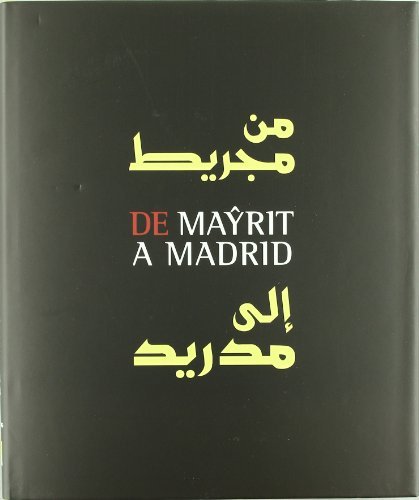
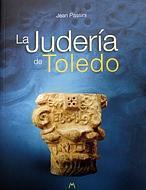

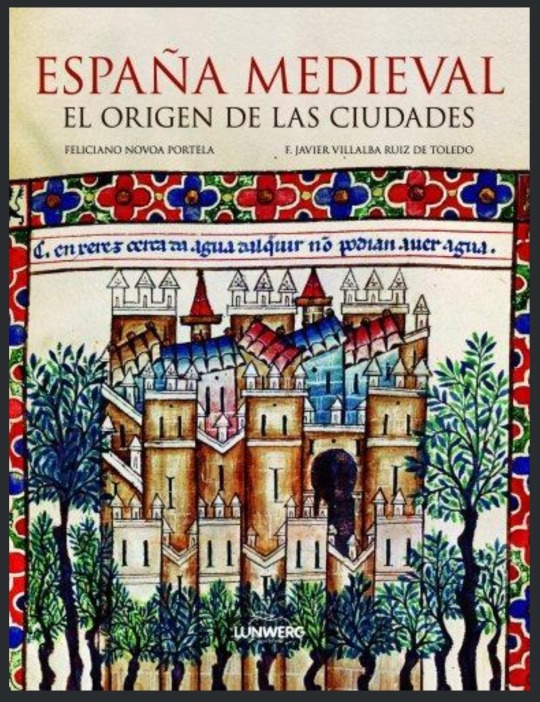


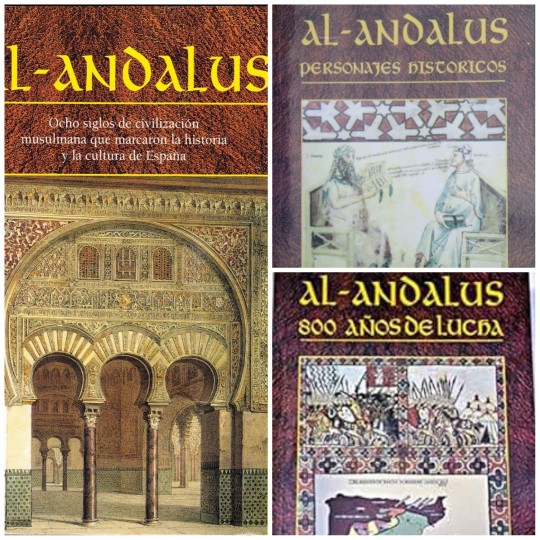

Propaganda
1. La Orden de Toledo: Paseos imaginarios en tiempos de vanguardia (The Order of Toledo: Imaginary walks in avant-garde times)
Author: Pantoja Rivero, Juan Carlos
Editorial: Covarrubias Ediciones
Edition: 2019
Synopsis: The Order of Toledo was, above all, an avant-garde fantasy of the brilliant film director Luis Buñuel, who knew how to infect his friends from the Generation of '27 to the Spanish intellectuality of the first third of the 20th century. Together, they dedicated themselves to living Toledo as if it were the great stage of a surrealist montage, in an artistic (or anti-artistic and irational) contrast with the monumentality and historical past of the old dead city.
(Well, in my blog I have been making posts about The Order of Toledo and the book is a valuable source)
2. Toledo: La ciudad de los muertos (Toledo: The city of the dead)
Author: Leblic García, Ventura Editorial: Covarrubias Ediciones Edition: 2013
Synopsis: Toledo. A large historical necropolis where Carpetans, Romans, Visigoths, Muslims, Jews and Christians rest...their rites around death, beliefs, customs, evolution of the cemetery spaces...
(I have posted the scans of the first pages of this books and I'm planning to keep on posting them but I wanted to know if you want scans from another book)
3. De Mayrit a Madrid: Madrid y los árabes del siglo IX al siglo XXI (From Mayrit to Madrid: Madrid and the Arabs from the 9th century to the 21st century) Editors: Madrid. Casa Árabe e Instituto Internacional de Estudios Árabes y del Mundo Musulmán ; Barcelona ; Madrid: Lunwerg Edition: 2011
Synopsis: This work deals with the Arab-Islamic past (Andalusian, Mudejar and Moorish) of Madrid and its forgotten heritage since it is the only European capital whose origins and name are linked to Arabic.
Revisiting that past and making it known is the objective of this work, which wants to rescue knowledge of a relationship between Madrid and the Arabs that does not end in the Middle Ages, since the town and court maintained various links with what was over time. Arab through diplomatic delegations, Arab figures welcomed by the city, valuable collections of manuscripts and numismatics, a romantic architectural taste that seeded the city with unique neo-Islamic buildings or Hispano-Arab scientific and cultural institutions. And, finally, the cosmopolitan and intercultural reconversion of the city has made it the recipient of a new Arab and Muslim immigration that once again gives human visibility to this relationship between Madrid and the Arab.
4. La Judería de Toledo (The Jewish Quarter of Toledo)
Author: Passini, Jean
Editorial: Ediciones del Sofer
Edition: 2014
Synopsis: The work reveals the vestiges of the areas of medieval Toledo Jewry and its history. It collects a topographical reading of its evolution and offers the main elements through maps, plans and high-quality color photographs.
5. Casas y casas principales urbanas : el espacio doméstico de Toledo a fines de la Edad Media (Houses and main urban houses: the domestic space of Toledo at the end of the Middle Ages)
Author: Passini, Jean. Editor: Toledo. Universidad de Castilla-La Mancha
Edition: 2004
Synopsis: This work is an extension of previous research on different districts, and seeks, for the city as a whole, to “understand the genesis of medieval urban space, to follow its transformations and successive reappropriations” , mainly with the aim of understanding, for one of the ancient provincial capitals of al-Andalus, the modalities of the transition from the Muslim city of the end of the eleventh century (time of its occupation by the Christians) to the Castilian city of the end of the Middle Ages. The main documentary basis of the work is a very important and very detailed inventory of the real estate of the Cathedral Chapter, an inventory carried out in 1491-1492, which covers a considerable heritage of 557 various buildings located in 64 sites or districts. The identification and location of houses, shops, mesones or fondouks and other urban buildings, often difficult on the current plot, has however resulted in the careful study of more than half of these old buildings. The systematic comparison of the text from the end of the Middle Ages with the remains still visible above ground or underground (and this very meticulous and patient work in the cellars of current Toledan houses is one of the great originalities of the research of Jean Passini) gave the results which are presented in this latest publication.
6. España medieval : el origen de las ciudades (Medieval Spain: the origin of the cities)
Authors: Novoa Portela, Feliciano; Villalba Ruiz de Toledo, F. Javier Editors: Barcelona ; Madrid : Lunwerg, D.L.
Edition: 2012
Synopsis: A fascinating essay that will teach us to look at and understand our cities better. In the pages of this essay we will analyze the Roman origins, the Islamic, Christian and European influences to discover the cultural melting pot that marks the Spanish urban legacy, without forgetting some disappeared cities that tell us their history through archaeological remains.
7. Valle-Inclán y el insólito caso del hombre con rayos x en los ojos (Valle-Inclán and the unusual case of the man with x-rays in his eyes)
Editors: Madrid. La Felguera
Edition: 2014 Synopsis: In 1923, a piece of news sparked great controversy among intellectuals, journalists and scientists. Joaquín Argamasilla, a young descendant of a family of aristocrats, claimed to have x-ray vision that allowed him to see through opaque bodies. The controversy, which divided half the country between defenders and detractors of the strange case, reached the highest circles. In April, at the initiative of Queen María Cristina, a commission was established to study the case, chaired by Ramón y Cajal. Valle-Inclán came to Argamasilla's defense and the great Harry Houdini challenged him to a public demonstration in New York.
(Joaquín Argamasilla, Harry Houdini, Valle-Inclán, Ramón y Cajal... yep, we're thinking the same, episode 2xO6, Tiempo de Magia, from El Ministerio del Tiempo, if anyone wants to learn more about this topic this book is good)
8. Guía mágica de Toledo y su provincia (Magical guide to Toledo and its province) Authors: Rodríguez Bausá, Luis; Álvarez de Toledo, Javier Mateo Editorial: Ediciones Covarrubias
Edition: 2010
Synopsis: Saramago wrote that traveling should be a matter of another matter, staying more and walking less; and a little later he added that it is not good to stay for only a quarter of an hour next to a construction that is seven hundred years old. The authors agree with such appropriate phrases, and that is why they have written this route, this uneven guide, this compilation of events, in short, so that the traveler stops in a multitude of towns that only sounded like transit and never like stop and inn. Because the truth is that the city of Toledo and its province discreetly hide a large number of enclaves that deserve to be savored by the five senses, and in which one must rest until the memory is macerated. This is what this work talks about: caves, sacred mountains, magical wells, rainy images, enchanted fountains or thunderous miracles... but, above all, towns, cities and regions; yes, with order and a taste of dissidence and heterodoxy.
Also included is what the authors have called "Beginner's Guide", a brief but rigorous approach to the magical phenomenon, something like an index so that whoever wants it, has the basic premises to get started in the world of research on these issues.
9. AL-ANDALUS. Ocho siglos de civilización musulmana que marcaron la historia y la cultura de España (AL ANDALUS. Eight centuries of Muslim civilization that marked the history and culture of Spain) Author: Masiá, Concha Editorial: ALBA Edition: 2006
Synopsis: "In the year 711, the Muslims arrived in the Iberian Peninsula. They called the vast territory where they settled for 800 years, from Tarifa to the Pyrenees, from the Levant to Portugal, al-Andalus. With their lights and shadows, these eight centuries of Muslim civilization, configuring many aspects of our personality as a people and as a culture, to which we Spaniards of the 21st century are still indebted"
This book and the following two books are like a triology about Al Andalus. This first one collects information about the different periods, states, events and some of its rulers throughout the history of Al Andalus.
10. AL-ANDALUS. Personajes históricos (AL ANDALUS. Historical figures) Author: Masiá, Concha Editorial: Albor Libros, Madrid Edition: 2011
Synopsis: "A general vision of al-Andalus, from the 8th century to the 17th century, through its most prominent characters and also through less known, although no less important, people. Both of them reveal the splendor and glory of the imperishable Andalusian legacy"
This book gathers information about divers people from different states and periods throughout the history of Al Andalus: emirs, caliphs, politicians, religious leaders, warriors, scholars, artists, philosophers, poets...
11. AL-ANDALUS. 800 años de lucha (AL ANDALUS. 800 years of struggle)
Author: Masiá, Concha Editorial: Albor Libros, Madrid Edition: 2011
Synopsis: "In the year 711, the Muslims arrived in the Iberian Peninsula. They called the vast territory where they settled for 800 years, from Tarifa to the Pyrenees, from the Levant to Portugal, al-Andalus. With their lights and shadows, these eight centuries of Muslim civilization, configuring many aspects of our personality as a people and as a culture, to which we Spaniards of the 21st century are still indebted"
This book offers a view on the warfare, battles and military campaigns from different periods and states throughout the history of Al Andalus.
12. 20 grandes obras de 20 autores andalusíes (20 great works by 20 Andalusian authors)
Author: Lirola Delgado, Jorge
Editorial: FUNDACIÓN IBN TUFAYL DE ESTUDIOS ARABES
Edition: 2014
Synopsis: Selection of 20 Andalusian authors and 20 works from the different periods of al-Andalus. The book offers a biography of each author and a detailed description of the work.
#bookblr#books#history#polls#history books#spanish history#al andalus#la orden de toledo#paseos imaginarios en tiempos de vanguardia#toledo: la ciudad de los muertos#de mayrit a madrid#madrid y los árabes del siglo IX al siglo XXI#la judería de toledo#casas y casas principales urbanas#el espacio doméstico de Toledo a fines de la Edad Media#españa medieval : el origen de las ciudades#valle-inclán y el insólito caso del hombre con rayos x en los ojos#guía mágica de toledo y su provincia#AL-ANDALUS. Ocho siglos de civilización musulmana que marcaron la historia y la cultura de España#AL-ANDALUS. Personajes históricos#AL-ANDALUS. 800 años de lucha#20 grandes obras de 20 autores andalusíes#sefarad#madrid#toledo#the order of toledo#The Order of Toledo: Imaginary walks in avant-garde times#Toledo: The city of the dead#From Mayrit to Madrid#Madrid and the Arabs from the 9th century to the 21st century
10 notes
·
View notes
Text





Espacio CDMX
2 notes
·
View notes
Text
Marcela González Salas
Marcela González Salas #aperturaintelectual #palabrasbajollave Thelma Morales García
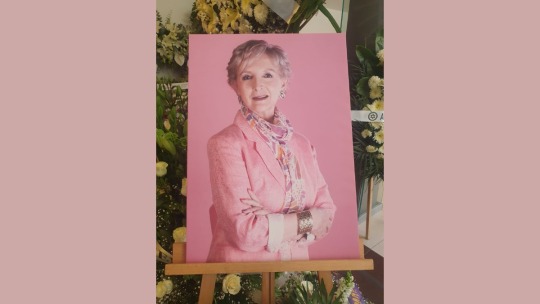
View On WordPress
#AperturaIntelectual#palabrasbajollaveAI#Arte#Cultura#Directora General del Instituto Mexiquense de Cultura#Marcela González Salas#Personajes#Poesía#Rehabilitación de espacios culturales#Secretaria de Cultura#Thelma Morales García
3 notes
·
View notes
Text
Te invitamos a la primera edición de la Feria Territorio, un espacio que celebra la convergencia entre lo artesanal y lo contemporáneo en el marco de la Semana del Arte de CDMX.
En Espacio CDMX, el diseño y el arte-objeto se transforman en narrativas visuales que cruzan fronteras, conectan comunidades y proyectan el futuro de la creatividad mexicana. Aquí, cada creador contará su propia historia: piezas únicas, colecciones innovadoras y propuestas que reflejan la riqueza cultural y el talento de nuestro país.
Territorio no es solo una feria, es un encuentro que materializa la visión de Design Week Mexico: unir a la comunidad creativa, celebrar la diversidad y explorar las infinitas posibilidades del diseño como lenguaje universal.
¡Te esperamos del 05 al 09 de febrero en Espacio CDMX para ser parte de esta celebración del diseño y el arte-objeto contemporáneo mexicano!
FERIA: 5/6/7/8/9 Febrero | 11:00h – 18:00h INAUGURACIÓN: Miércoles 5 Febrero | 18:00h
Ubicación: Espacio CDMX Arquitectura y Diseño Av. de los Compositores 4, Bosque de Chapultepec II Secc, Miguel Hidalgo, CP 11100, Ciudad de México.
Evento Gratuito
0 notes
Text
PublicSpace - Premio 2024
Parque en la Colina del Levantamiento de Varsovia Varsovia (Polonia), 2023 Kopiec Powstania WarszawskiegoArchigrest Warszawa 2023 – Fotografía: http://www.publicspace.org/es/el-premio/-/edition/2024/results Un nuevo parque en el centro de Varsovia integra de forma innovadora la historia de la zona reciclando ruinas de la Segunda Guerra Mundial para crear un espacio público accesible y…

View On WordPress
#Arquitectura#Bienal#Ciudad#Concurso#Cultura#Diseño#espacio público#Europa#Paisajismo#planificación#Premio 2024#proyectos#PublicSpace#Urbanismo
0 notes
Text
Biblioteca Popular de Jujuy: 125 años de historia, cultura y compromiso con la comunidad
Biblioteca Popular de Jujuy: 125 años de historia, cultura y compromiso con la comunidad Celebran 125 años de la Biblioteca Popular de Jujuy, resaltando su rol cultural en la provincia y su apoyo al patrimonio histórico de Jujuy.
La Biblioteca Popular de Jujuy celebró recientemente su 125° aniversario, un acontecimiento que reunió a autoridades provinciales, municipales y a miembros de la comunidad. El gobernador Carlos Sadir, junto a otras autoridades, destacó el rol de la biblioteca como una de las instituciones culturales más antiguas e importantes de la provincia, un verdadero emblema del patrimonio y la cultura en…
#acceso a la educación#acceso a la lectura#acceso gratuito#actividades#ad honorem#apoyo estatal#Autores Jujeños#Biblioteca Popular de Jujuy#Carlos Sadir#colección de libros#colección documental#compromiso social#Concejo Deliberante#conciertos de coros#Conocimiento#conservación#COVID-19#crecimiento intelectual#Cultura#digitalizada#Educación#empleados#espacio de referencia#estudios#eventos culturales#festejos#formación cultural#fortalecimiento cultural#hemeroteca#histórico edificio
0 notes
Text
Una sola interacción con un fan de visual kei q no haya sido agresiva o grosera de la verga no he tenido
#si tienen la oportunidad de interactuar con los fans latinos de visual kei#desaprovéchenla#exagero#si hay personas lindas pero nunca me habían tocado personas tan prepotentes en un mismo espacio#mira que empezar a insultar nomás por un comentario sobre mi cultura en un video#todo mal
1 note
·
View note
Text
Jujuy: Nuevo destino para Bodas y Romance
Jujuy: Nuevo destino para Bodas y Romance Jujuy firma convenio para promocionar el destino como lugar de bodas y romance, impulsando su identidad y servicios especializados.
Jujuy firma convenio para promocionar el destino como lugar de bodas y romance, impulsando su identidad y servicios especializados. Jujuy: Nuevo Destino para bodas y romance En un esfuerzo por diversificar su oferta turística, la provincia de Jujuy ha firmado un convenio marco de cooperación para promoverse como un destino de bodas y romance. El acuerdo, firmado por el Ministro de Cultura y…
#008080#atractivos naturales#bodas#Bureau de Eventos y Convenciones de Jujuy#cadena de valor turística#Carolina Pedano#Cartagena de Indias#convenio marco de cooperación#Cultura y Turismo#destino de bodas#destino de romance#espacios#España#Federico Posadas#feria Meet Up#fortalecimiento#identidad#Impacto Económico#Italia#José Ortíz#Jujuy#Las Vegas#Luis Alonso#Mendoza#patrimonio cultural y natural#promoción externa#Rodrigo Torres#romance#Sala Silvetti#servicios especializados
0 notes
Text
Nebulosa de Orión
La Nebulosa de Orión, también conocida como M42, es una de las nebulosas más famosas y estudiadas en el universo. Se encuentra en la constelación de Orión y es visible a simple vista como una mancha difusa en el cielo nocturno. Su belleza y complejidad la convierten en un objetivo popular para observadores astronómicos y telescopios de todo el mundo.
Origen de la Nebulosa de Orión:
La Nebulosa de Orión es una región de formación estelar activa, donde nacen nuevas estrellas a partir del colapso gravitacional de nubes de gas y polvo. Se estima que su edad es de alrededor de 2 millones de años y contiene cientos de estrellas jóvenes, algunas de las cuales son masivas y luminosas.
Teorías sobre su Formación:
Colapso Gravitacional: La teoría principal sobre la formación de la Nebulosa de Orión es que se originó a partir del colapso gravitacional de una nube molecular gigante. Esta nube colapsó bajo su propia gravedad, formando densos núcleos de gas y polvo que eventualmente se convirtieron en estrellas.
Efectos de las Estrellas Masivas: Otra teoría sugiere que la radiación intensa y los vientos estelares de las estrellas masivas en el centro de la nebulosa podrían haber contribuido significativamente a su formación y estructura actual.



Fuentes:
NASA. (s.f.). Orion Nebula. Recuperado de: https://www.nasa.gov/content/goddard/hubble-s-view-of-the-orion-nebula
European Southern Observatory (ESO). (s.f.). The Orion Nebula. Recuperado de: https://www.eso.org/public/images/eso1821a/
University of Arizona. (s.f.). The Formation of Stars and Planetary Systems: The Orion Nebula. Recuperado de: https://www.as.arizona.edu/sites/default/files/u107/The_Orion_Nebula.pdf
0 notes
Text
Descubrimiento de Momias de Niños de la Cultura Ychsma en Lima, Perú
En un sorprendente hallazgo arqueológico, cuatro niños momificados han sido descubiertos en lo que ahora es uno de los barrios más antiguos de Lima, Perú. Se cree que estas momias tienen al menos 1,000 años de antigüedad y formaban parte de la cultura Ychsma. El descubrimiento tuvo lugar en lo que en su momento fue un espacio ceremonial sagrado, ahora considerado uno de los vecindarios más…

View On WordPress
#antigüedad#arqueología#ascendencia#atrio ceremonial#Basura#cabello#conquistadores#craneos#cultura Ychsma#Cusco#descubrimiento#Egipto#entierros#espacio ceremonial#esqueletos#excavadores#Héctor Walde#homeless#Huaca La Florida#huacas#Imperio Inca#Lima#Luis Takuda#Ministerio de Cultura#Miraflores#momias#natrón#ninos#Peru#reuters
0 notes
Link
#_televisión programas de tve cultura noticias de culturales#_radio programas de rne entretenimiento espacio en blanco
0 notes
Text
Van Cultura y Congreso capitalino por nueva ley de espectáculos públicos en CDMX
Que garantice los derechos de quienes impulsan las expresiones artísticas en el espacio público
Por una ciudad libre, con actores y ambientes culturales independientes
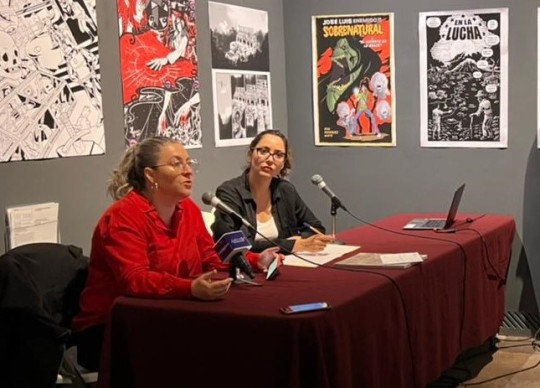
Luego de realizarse, en el Congreso capitalino, el foro: “Rumbo a la actualización de la Ley para la Celebración de Espectáculos Públicos de la Ciudad de México”, la secretaria de Cultura de la Ciudad de México, Claudia Curiel de Icaza, consideró que “una ciudad diversa, libre y con actores y ambientes culturales independientes, debe transparentar el acceso a los espacios públicos y garantizar derechos culturales a los capitalinos”.
“Para esta secretaría, continuó, es importantísimo garantizar, no sólo el acceso a la cultura, sino la producción y divulgación de las distintas expresiones para que no quede a discrecionalidad su realización, y mejorar la transparencia para estas producciones independientes, ya que no solamente los eventos masivos son importantes, hay muchísimas iniciativas autogestivas que participan en el espacio público y muchas veces pareciera que ellas no tienen derecho, cuando justamente la calle es de todes; por ello, para nosotros es muy importante acompañar este proceso, sumar y construir, en función de la diversidad cultural, un acceso al espacio público más democrático”.
A su vez, la diputada Ana Francis López Bayguen Patiño, señaló que la actual ley está planteada desde la perspectiva de cuidado para los espectáculos masivos, por lo que la idea de esta nueva ley es “incluir todas aquellas manifestaciones artísticas que han sido relegadas, pero que forman parte de la realidad y que responden a un escenario pandémico y pospandémico en la ciudad.”
“No quitaremos relevancia, ni garantías a los grandes espectáculos masivos, pero sí agregaremos a todas aquellas actividades artísticas que también ocurren en el espacio público, y que deberían empezar a ser consideradas para eliminar la visión clasista y racista de la cultura, como parte del proyecto del nuevo país por el que se está trabajando y al que le estamos apostando. Así los espectáculos callejeros que van desde los mimos, payasos, m��sicos, cirqueros, etc. que en buena medida actualmente están a merced de lo que se le vaya ocurriendo a la autoridad en cuestión, en las alcaldías, serán ordenadas y reguladas con el fin de que no sigan cayendo en la corrupción”.
Al referirse al foro realizado recientemente: “Rumbo a la actualización de la Ley para la Celebración de Espectáculos Públicos de la Ciudad de México”, que contó durante tres días con la participación de artistas, autoridades, funcionarios, entre otros; la también presidenta de la Comisión de Igualdad de Género en el Congreso CDMX reiteró que otra de las conclusiones más importantes de este foro para cambiar en la actual ley (que se espera sea dictaminada y votada en el pleno del Congreso de la CDMX, en el primer trimestre del próximo año), es la consideración urgente de incluir a la Secretaría de Cultura en las directivas de regulación y ordenanza, y que las decisiones que se tomen sean realmente de orden y cultura al mismo tiempo.
“Hemos estado en estrecha comunicación con la Secretaría de Cultura, ya que pretendemos avanzar conjuntamente en una ley muy ambiciosa, con un cableado muy amplio, que pueda ir de la mano también de alcaldías y de Secretaría de Gobierno para garantizar mayor transparencia al hablar de otorgamiento de permisos, regulación de impuestos, seguridad, e inclusión”.
Dentro de las conclusiones del foro mencionado, que constó de ocho mesas de trabajo, se habló sobre la identidad y el sentido de pertenencia que generan en las calles, en los barrios de la ciudad, los espectáculos públicos. Es por ello que se reiteró la necesidad de buscar políticas gubernamentales con leyes, logística, y apoyos e incentivos para que las producciones puedan ir a las alcaldías, generando una derrama económica local.
0 notes
Text
Reconocimiento del potencial humano ante los cambios
Recognition of human potential in the face of changes OSCAR RODRIGUEZ OCHOA Director General de Cultura Cósmica. Columnista Los tiempos actuales marcan un preámbulo sin precedentes en la historia planetaria y de la humanidad. Los cambios que se generan momento a momento dan fiel testimonio del salto cuántico que Gaia efectúa dentro de sus estructuras internas y externas. The current times mark…
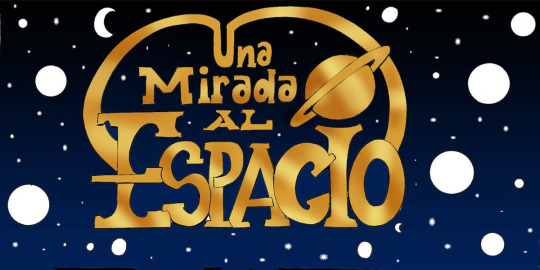
View On WordPress
#CAMBIOS#COLUMNA#CULTURA CÓSMICA#HUMANIDAD#LO MAS LEIDO#MEXICO#MUNDO#OSCAR RODRIGUEZ COLUMNISTA#RECONOCIMIENTO DEL POTENCIAL HUMANOS ANTE LOS CAMBIOS#UNA MIRADA AL ESPACIO
0 notes
Text
José María García de Paredes, Espacios de encuentro - octubre en Museo ICO
José María García de Paredes en la iglesia de Almendrales, Madrid, 1965. Fotografía: © Alberto Schommer. VEGAP M – Cortesía Museo ICO El próximo 2 de octubre el Museo ICO inaugura la exposición José María García de Paredes. Espacios de encuentro, comisariada por la arquitecta Ángela García de Paredes. La muestra conmemora el centenario del nacimiento de uno de los principales arquitectos…

View On WordPress
#Arquitecto#Arquitectura#Cultura#Diseño#Entrada Libre#España#Espacios de Encuentro#Espacios de encuentroMuseo ICO#Exposición#Madrid#Museo ICO#Patrimonio
0 notes